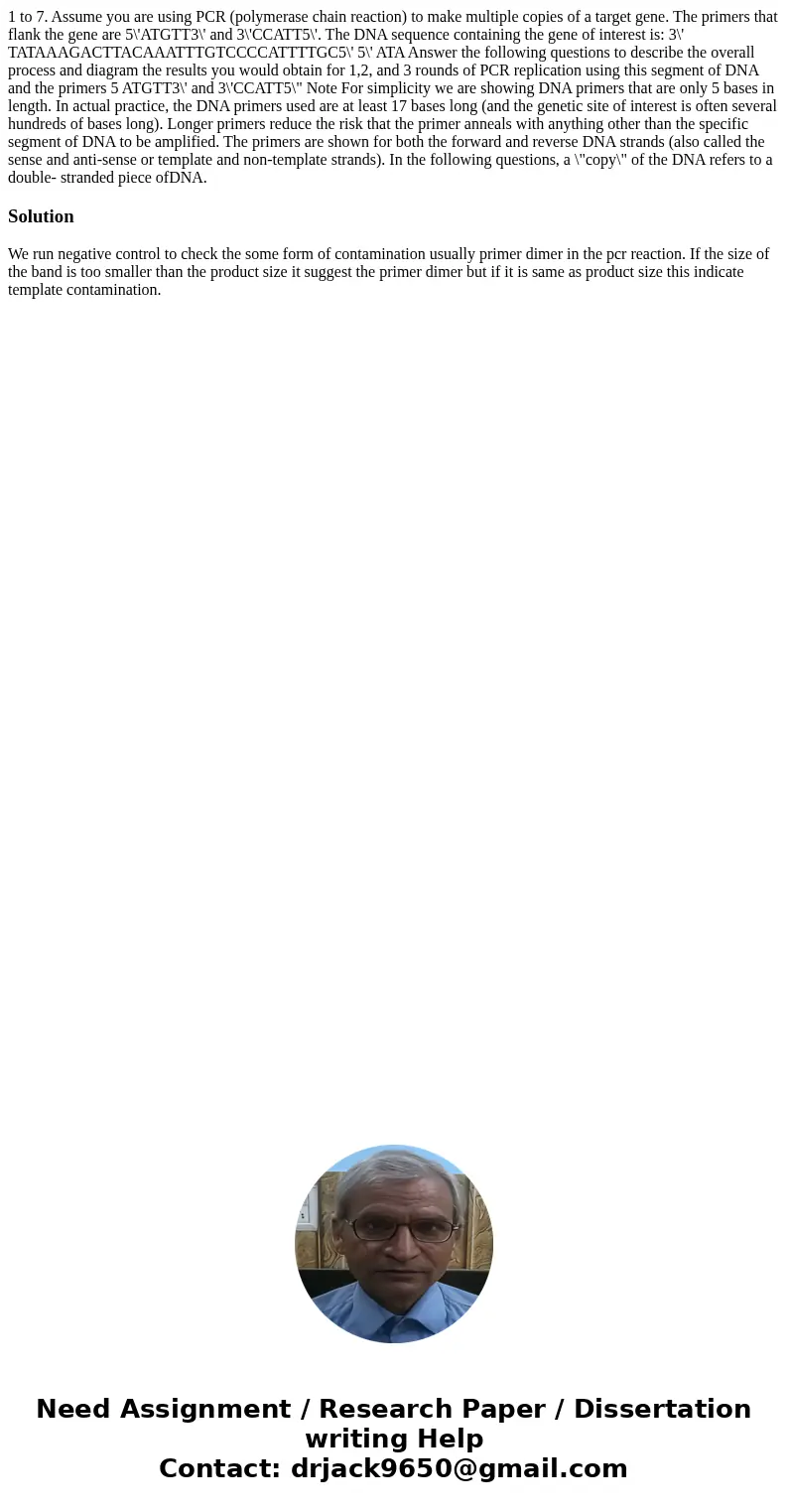1 to 7 Assume you are using PCR polymerase chain reaction to
1 to 7. Assume you are using PCR (polymerase chain reaction) to make multiple copies of a target gene. The primers that flank the gene are 5\'ATGTT3\' and 3\'CCATT5\'. The DNA sequence containing the gene of interest is: 3\' TATAAAGACTTACAAATTTGTCCCCATTTTGC5\' 5\' ATA Answer the following questions to describe the overall process and diagram the results you would obtain for 1,2, and 3 rounds of PCR replication using this segment of DNA and the primers 5 ATGTT3\' and 3\'CCATT5\" Note For simplicity we are showing DNA primers that are only 5 bases in length. In actual practice, the DNA primers used are at least 17 bases long (and the genetic site of interest is often several hundreds of bases long). Longer primers reduce the risk that the primer anneals with anything other than the specific segment of DNA to be amplified. The primers are shown for both the forward and reverse DNA strands (also called the sense and anti-sense or template and non-template strands). In the following questions, a \"copy\" of the DNA refers to a double- stranded piece ofDNA. 
Solution
We run negative control to check the some form of contamination usually primer dimer in the pcr reaction. If the size of the band is too smaller than the product size it suggest the primer dimer but if it is same as product size this indicate template contamination.

 Homework Sourse
Homework Sourse